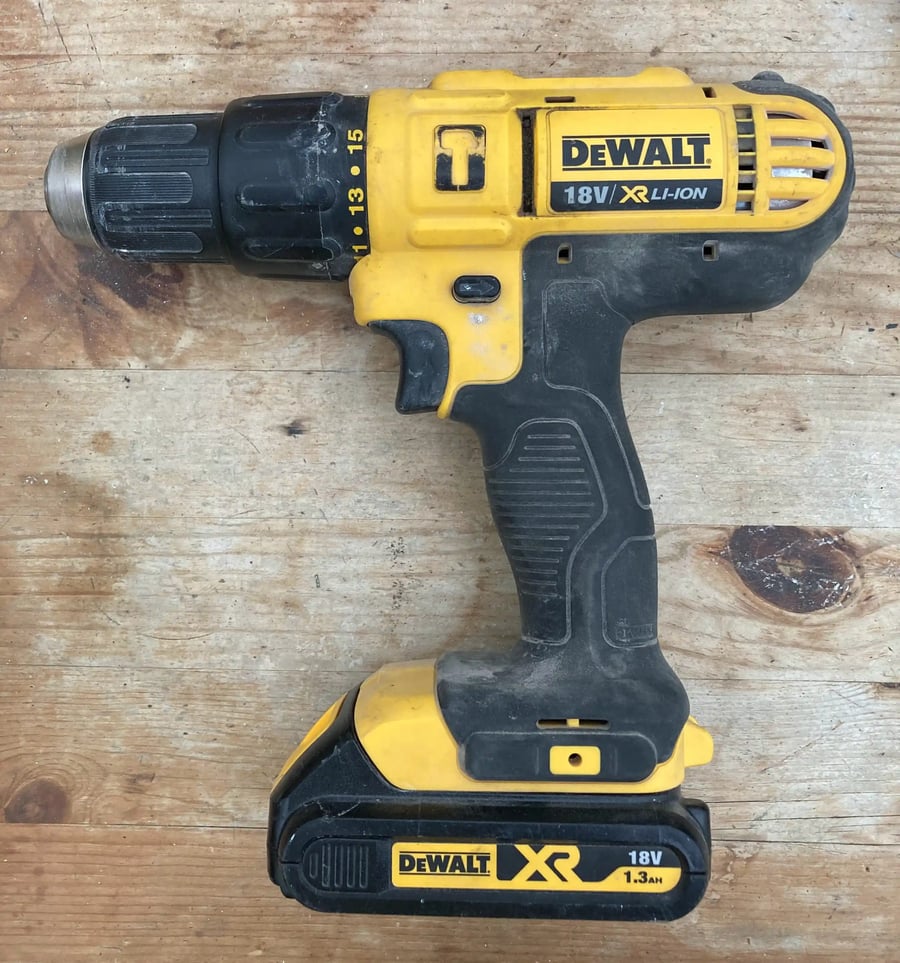Drills

A drill is a tool primarily used to create circular holes in materials like wood, metal, or plastic. It operates with a rotating drill-bit, powered by mains power, batteries, or manual force.
This guide will focus on how to use powered drill as these are the most common variants. Some of the same principles are applicable to manual drills.
How To Use
Drills are simple to use. Just follow these steps:
- Choose the right drill bit
- Select a drill bit that matches the material and size of the hole you need (For wood, use a wood drill bit, for metal, use a metal drill bit, and for masonry, choose a masonry bit). Ensure the bit is securely attached to the drill chuck.
- Insert and secure the drill bit
- Open the jaws of the chuck by twisting the chuck anti-clockwise (older drills may require a key for this). Slide the chosen drill bit into the centre of the chuck and tighten by turning the chuck clockwise. The bit should be axially aligned with around 2 cm of the shaft inside the jaws. In some cases the drill bit may be two toned to show how far it should be inserted.
- Configure the drill
- Set the drill to the desired speed and direction. For drilling holes, set the drill to clockwise rotation. Choose the appropriate speed and disengage the clutch if necessary. In most circumstances hammer mode should not be engaged.
- Position the drill
- Hold the drill firmly and align the tip of the drill bit with the spot where you want to create the hole. Keep the drill steady and perpendicular to the surface.
- Start drilling
- Slowly squeeze the trigger to start the drill. Apply gentle pressure through the handle of the drill to guide the bit into the material. Feel how the drill is cutting and increase the speed and force if necessary.
- Stop drilling
- Stop when the hole is at the desired depth or if the drill begins to overheat or bind.